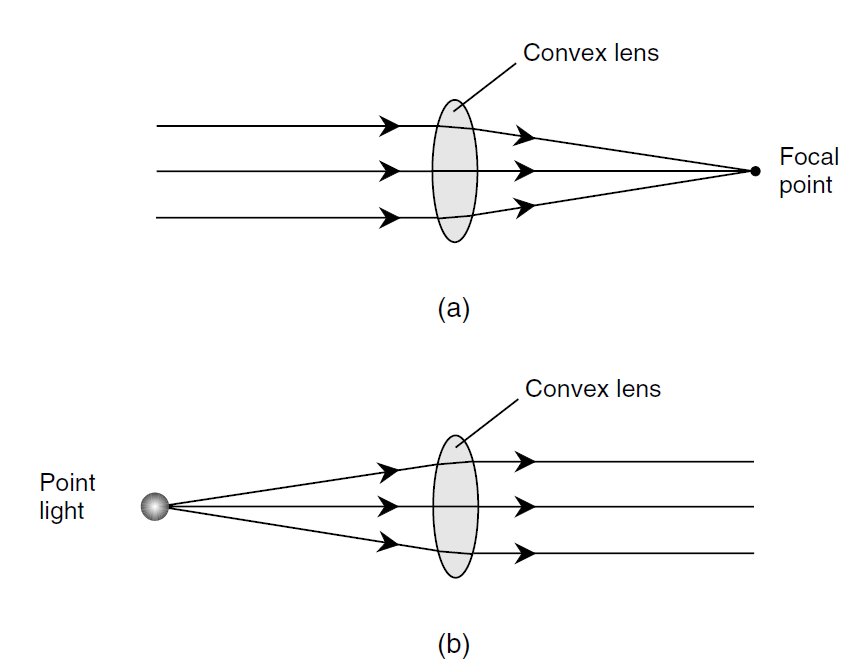
THE CONVEX LENS
 المؤلف:
S. Gibilisco
المؤلف:
S. Gibilisco
 المصدر:
Physics Demystified
المصدر:
Physics Demystified
 الجزء والصفحة:
407
الجزء والصفحة:
407
 9-11-2020
9-11-2020
 5015
5015
THE CONVEX LENS
You can buy a convex lens in almost any novelty store or department store. In a good hobby store you should be able to find a “magnifying glass” up to 10 cm or even 15 cm in diameter. The term convex arises from the fact that one or both faces of the glass bulge outward at the center. A convex lens is sometimes called a converging lens. It brings parallel light rays to a sharp focus or focal point, as shown in Fig. 1a, when those rays are parallel to the axis of the lens. It also can collimate (make parallel) the light from a point source, as shown in Fig. 1b.
The properties of a convex lens depend on the diameter and the difference in thickness between the edges and the center. The larger the diameter, the greater is the light-gathering power. The greater the difference in thickness between the center and the edges, the shorter is the distance between the lens and the point at which it brings parallel light rays to a focus. The effective area of the lens, measured in a plane perpendicular to the axis, is known as the light-gathering area. The distance between the center of the lens and the focal point (as shown in Fig. 1a or b) is called the focal length. If you look through a convex lens at a close-up object such as a coin, the features are magnified; they appear larger than they look with the unaided eye. The light rays from an object at a great distance from a convex lens converge to form a real image at the focal point.

Fig. 1. (a) A convex lens focuses parallel light rays to a point. (b) The same lens collimates light from a point source at the focus.
The surfaces of most convex lenses are spherical. This means that if you could find a large ball having just the right diameter, the curve of the lens face would fit neatly inside the ball. Some convex lenses have the same radius of curvature on each face; others have different radii of curvature on their two faces. Some converging lenses have one flat face; these are called planoconvex lenses.
 الاكثر قراءة في مواضيع عامة في علم البصريات
الاكثر قراءة في مواضيع عامة في علم البصريات
 اخر الاخبار
اخر الاخبار
اخبار العتبة العباسية المقدسة


